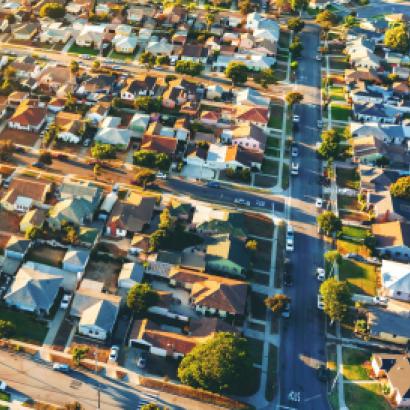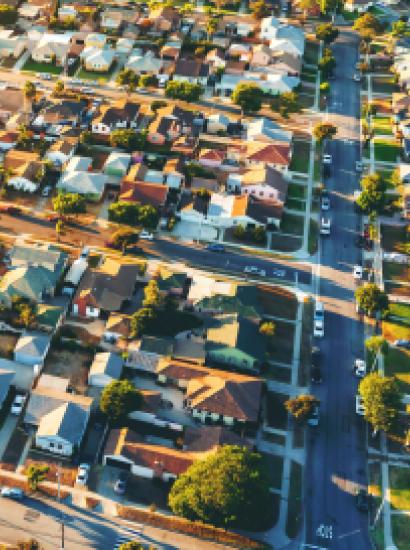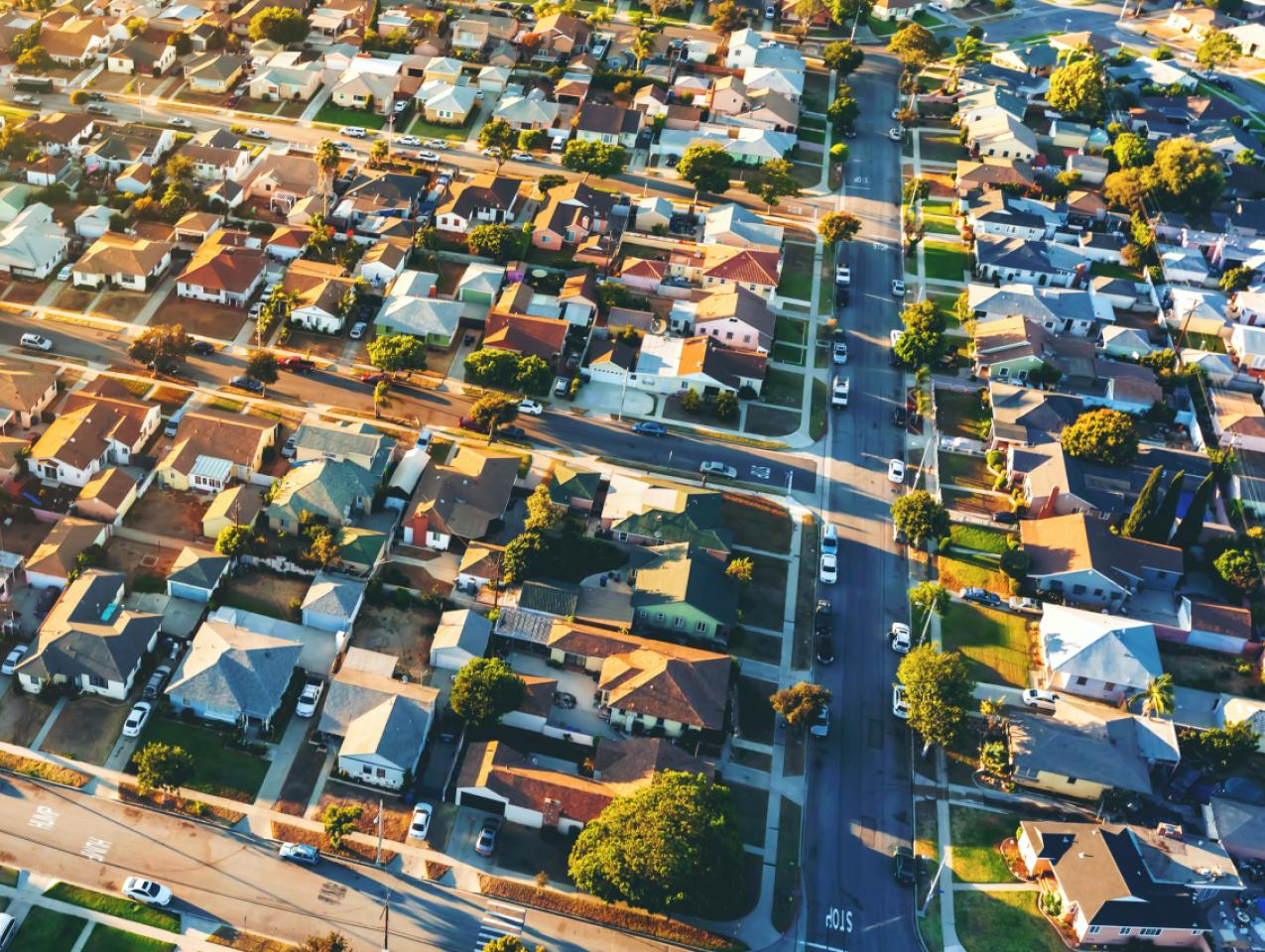- Politics, Institutions, and Public Opinion
- State & Local
- California
A funny thing about California: in the 1950s, it was a nice place to visit, but you didn’t necessarily want to live there. Remember when the cast of I Love Lucy came West, to mix and mingle with the Hollywood set? Lucy and Ricky and Fred and Ethel had their fill of sunshine and celebrities, only to return to their cozy apartments on Manhattan’s Upper East Side (technically, the address had the Ricardos and Mertzes living in the East River).
In the 1960s and 1970s, California became a place to lay down sitcom roots. Steve Douglas, the patriarch of My Three Sons, was an aeronautical engineer who’d relocated to Southern California. And you might recall The Brady Bunch living en masse in a split-level house (a rather uninspiring home for a fictional architect) that in reality is a five-bedroom, three-bath spread in North Hollywood.
There’s still a California presence on television today— for example, the three broods in ABC’s Modern Family are scattered around Los Angeles. Another hip sitcom, Blackish, features an African American family living in the San Fernando Valley (the real-life home for the fictional Johnsons is in Sherman Oaks). But for families not residing in Television Land, California doesn’t come equipped with a laugh track.
And that begins with one central problem: livability.
In March, Southern California’s median home price jumped 8.4% to a new record of $519,000 for new and resale houses and condos. The old record for the six-county region set back in December: $509,500.
The situation is no easier up north. San Jose has what is arguably the nation’s most competitive housing market— the largest price growth in America in fact, increasing 32.3% year-over-year to $1,263,500. Perhaps you saw the story about the condemned home in neighboring Fremont. Despite holes in the roof and mildew in the pipes, the three-bed/two-bath listing sold for $1.23 million. That was $230,000 over the asking price.
What do the winning bidders have in mind? Tearing down the current place, replace it with a bigger “greener” version, and putting the transformed property back on the market.
As one might imagine, the high cost of housing in California comes with a very human price, one being the urge to flee. Per migration estimates compiled by realtor.com, sixteen of California’s most popular—i.e., most expensive—counties are losing residents. Over the past decade, some one million Californians have relocated to the likes of Arizona, Nevada, Oregon, Texas and Washington.
Meanwhile, back in the Golden State, there’s the question of housing supply keeping up with demand. According to the same realtor.com report, over the past decade an average of 24.7 new housing permits were filed for every 100 new California residents. That’s barely half the national average of 43.1 permits. And it translates to a shortage of some 3 million homes over the next decade.
Then again, if you’re fortunate enough to find a home, good luck factoring it into your budget.
At present, California homeowners spend two dimes and one penny of every dollar of income on housing costs—the second worst rate in the nation. Renters have it even worse: nearly one-third (32.8%) of their income, which is good for 48th in the nation.
In the California of 2018, to paraphrase Mark Twain, housing has supplanted weather as the one item that everybody complains about but no one seems capable of addressing. That includes the State Legislature (more on that in a moment).
In this issue of Eureka, we’re addressing four aspects of California and the “livability” question – how a burgeoning population will cope with the need for added living space and the prospect of ever-increasing taxes that take a toll on housing budgets.
Our contributors include:
- Alice Hill, a Hoover Institution research fellow specializing in disaster preparedness, and Bill Kakenmaster, a Hoover research assistant, analyze an increasing risk to the California existence: climate change and growing development in the wildland-urban interface (WUI).
- Bruce Thornton, a Hoover Institution research fellow and Fresno County native, writes about a California Central Valley that’s politically invisible and at the moral and policy tastes of the Golden State’s dot.com north and Hollywood south.
- Tom Church, a Hoover Institution research fellow, examines taxation in the Golden State—what can be done in the way of tax policy to make California easier to negotiate.
- Andrew Poat, a former California gubernatorial aide and policy expert, explains why a recent housing “fix” in the State Legislature went down to—and offers some common-sense fixes.
We hope you enjoy this latest installment of Eureka – and that it gets you thinking about where California stands and whether America’s nation-state is moving in the right direction.
















